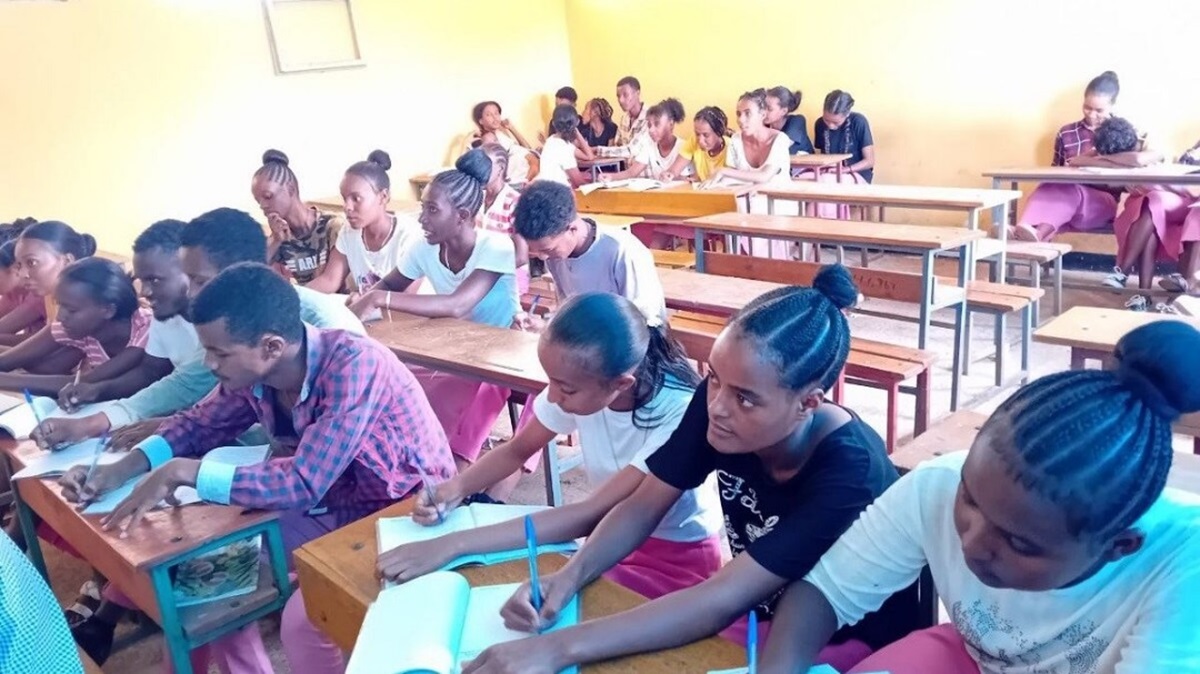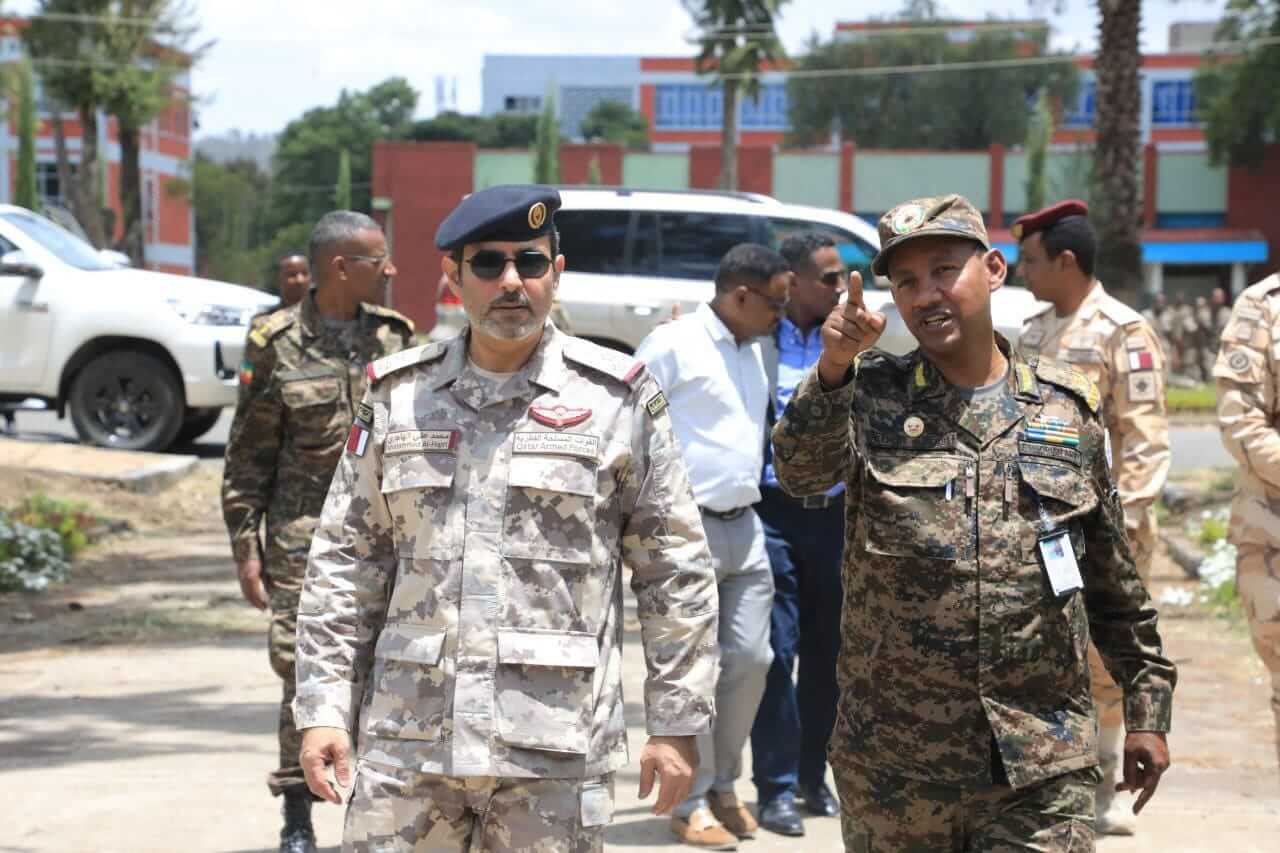Analysis: On Tigrayans’ plight at Jarre camp: urgent attention, end to misleading media reports needed

Asmelash Yohannes Teklu (PhD)
Addis Abeba – The Amharic version of the Reporter newspaper, which was published on 14 August 2022, stated that “more than 400 natives of Tigray are entering Raya Kobo city every day”.
True, a large number of Tigrayans are fleeing Tigray for economic and political reasons. However, the treatment they receive once they are in the hands of the Amhara police and the Ethiopian army differs significantly from what is stated in the above report. As a result, the report’s content contains a number of factual inaccuracies concerning the discrimination and abuse happening especially at one of the detention camps.
The newspaper quoted a police commander who stated that “Tigray natives who have been displaced from different places are being taken care of by providing them with the necessary resources. Security forces have been deployed to ensure their safety.” As will be demonstrated below, this is incorrect and the full picture of Tigrayans leaving Tigray must receive the proper attention.
On June 6, 2022, the Ethiopian Human Rights Commission (EHRC) sent a team to various camps in Ethiopia’s Amhara region to monitor Tigrayans’ situation. The team conducted extensive interviews and group discussions with Tigrayans being held in various camps, as well as with Amhara region relevant administrative authorities and security officials. Furthermore, EHRC conducted site observations and documented its evaluations. The report, which was originally written in Amharic, was, however, not made public.
Responding to an inquiry from Addis Standard, Rakeb Messele, Deputy Chief Commissioner, Ethiopian Human Rights Commission, who is also in charge of Refugees, Internally Displaced Persons (IDPs) and Migrants Rights issues at the Commission corroborated the Commission’s monitoring mission to Jaraa and Jarre camps, and said: “Following its first monitoring mission to the Jarra and Jarre camps in June 2022, EHRC has been in discussion with relevant security and administrative authorities at regional and federal level. The Commission will issue a report once the process is completed.”
The location of the camps
There are three camps for Tigrayans crossing the border between Ethiopia’s Tigray and Amhara regions. The Jarra and Jarre camps are located in the Amhara regional government’s Northern Wollo zone. The Jarra camp is 49 kilometers from Woldiya town. Close to thirty thousand Tigrayans are housed in this camp.
The Jarre camp, on the other hand, is located in Jarre town, 85 kilometers from Woldiya in North Wollo. This camp houses over three thousand Tigrayans.
The identification processes
At Kobo, the Ethiopian federal army maintains a checkpoint at specific place called Gollesha. This is situated on the border between the Amhara and Tigray regions. Previously, the area around Gollesha was controlled by the armed group locally known as Amhara Fano. However, the federal army is now in control of the area. Anyone crossing from Tigray into Amhara must therefore surrender to the federal government army at the Gollesha checkpoint. Reports show that the Tigrayans arriving at this checkpoint are met with brutal force, beatings, torture, and other forms of mistreatment. Sexual abuse, mobile phone confiscation, and other harsh measures are expected at this checkpoint. They are also not allowed to communicate with their families or any other entity.
The Tigrayans are then taken to the Kobo police station. Every day, anywhere between 100 to 200 newcomers arrive at the police station where they remain until their identities are confirmed. According to the identification process used by the federal army and the Amhara region security forces, the Tigrayans are classified into three. Captured TPLF fighters, displaced Tigrayans, and those fleeing Tigray for various reasons. The captured fighters are transferred to the Awash Arba camp. Other Tigrayans arrested in Addis Abeba, including politicians and those suspected of having ties with the TPLF, are also sent to this camp. This camp is closed to the outside world. As a result, little is known about the treatment and the conditions of Tigrayans who remain in this detention camp.
The remaining civilian Tigrayans – the displaced and those who flee Tigray for various reasons – are assigned to either Jarre or Jarra camps, depending on their origin.
Discrimination, abuse, and ill-treatment
Officials of the Amhara regional government are playing politics with these desperate Tigrayans’ lives. They have long claimed Alamata, Ofla, Korem, Raya Azebo, and other areas that, according to the FDRE constitution, are within the Tigray region. Tigrayans from the aforementioned areas are sent to Jarra camp. According to a March 2022 report by the UNOCHA, the relocation of an estimated 60,000 IDPs in Raya Kobo Woreda of North Wollo Zone, Amhara Region, started on 14 March. The majority of IDPs were displaced from Raya Alamata, Ofla,Zata, Korem and Raya Azebo woredas of Southern Zone, Tigray Region. As of 23 March, nearly 10,000 IDPs were reported to have relocated to Jarra in Dire Roka Kebele of Habru Woreda.”
But Tigrayans who have fled from other parts of Tigray are sent to Jarre camp (Turk camp). The type of aid and treatment these Tigrayans receive in both camps is startlingly different. Those in Jarra camp are well cared for and receive assistance from the Amhara regional government and other aid organizations. Those at the Jarre camp, on the other hand, are held in a detention camp. A recent report on 12 August aired on Channel 4 revealed the plight of those held inside the Jarre camp; it is the tip of the iceberg.
At the Jarre camp, there are various groups of Tigrayans who came from various backgrounds. Federal employees from Tigray-based federal institutions were among those detained at the Jarre camp. When the federal government summoned them to report in person, they speak of traveling from Tigray on foot or with the assistance of smugglers. They are, however, arrested and taken to the detention camp as soon as they arrived. They have been separated from their families and their workplaces. It is not clear why the federal government made the decision if it cannot provide them with safe passage to Addis Abeba. There are also government university students in this camp, and they said that being housed there caused disruptions in their academic pursuits.
Furthermore, there are Tigrayans who left their region citing the regional administration’s threat to their life. These people include those who worked for the federal government for the eight months when Tigray’s interim government was in place.There are also Tigrayans who had no political affiliation with either the TPLF or the federal government but fled Tigray for different reasons according to the Guardian report.
Whatever their reasons for fleeing Tigray, they are all treated the same once they are handed over to the military that operates the Jarre detention camp. They are known as the “Junta,” and they are discriminated against in a variety of ways.
Security and abuses at the camp
The EHRC monitoring report shows instances of security forces in charge of the Jarre camp abusing the detainees; and those who dare to express any concerns about human rights are regularly beaten. They are not allowed to leave the Jarre camp because they are considered a threat. As a result, they have difficulty obtaining health care and financial services.
There is also a practice of asking ransoms for the freedom of those detained at the camp. Those who have relatives in Addis Abeba and abroad are ransomed by their families for amounts ranging from birr 20,000 to birr 50,000. Those who are unable to provide the money are kept at the camp for a lengthy period of time.
Sexual abuse
Detainees have reported sexual abuses, too; this type of behavior is common, and the camp’s leaders tolerate it. There is an incident, for example, where a 14-year-old girl was raped and abused by soldiers. She was assaulted for several hours. Women are also taken outside the camp and abused. This inside the camp do not report such incidents for fear of further retaliations.
Overcrowding, and health facilities
There are no basic facilities such as medical care, adequate food, accommodation, education services. The detainees built shelter huts with the help of humanitarian organizations, but they are very cramped and difficult to live in due to the hot weather. More than twenty people share a 6 by 2.5-foot shelter. These shelters could not withstand heavy rain and frequently collapsed when it rains.
The detainees must also share a single mattress with three other people. Moreover, they are not separated based on their age or gender. As a result, women have sleepless nights because they are afraid of being attacked by other inmates while they are sleeping. The detainees are not permitted to use the toilets unless they pay birr 5 per visit and are charged for using the restroom. The same is true for taking a shower.
Moreover, there is no organized medical service, but one Tigrayan detainee provides some medical care. But other than oral clinical services, the treatment does not include tests. A professional fee of 50 Birr is charged for medical treatment in the camp, and the price of medicine is much higher than the price outside the camp. For example, they are required to purchase and use medicine for birr 140 that otherwise costs birr 35 outside of the camp.
Those with serious medical conditions must obtain permits to seek treatment in the nearby city of Hayq. The permits are issued by the commanders of the army in charge of the camp. It takes several days to obtain such permits. Furthermore, detainees are charged up to birr 600 for transportation to hospitals, and they are also required to cover the cost of the accompanying soldier. They do not receive free care at Hayq, either.
Conclusion
As the siege imposed on Tigray by the federal government, which the UN said is a “de facto blockade”, has made life difficult for ordinary Tigrayans who are not involved in politics, it is understandable why so many civilians are risking their lives to leave their homeland. With no banking, communication, education, health, or other facilities operating as of yet, more and more civilians are poised to pay the ultimate price for no fault of theirs.
Furthermore, there are multiple reports alleging that the TPLF which is governing the Tigray region, is making life hard for hose who refuse to join the army or are perceived to have ties with the federal government, although the party denies these allegations. Either way civilian Tigrayans, including women and children, find themselves between a rock and a hard place. The media should therefore conduct adequate researches into the context before publishing misleading stories. AS
_____________________________________________________________________//__________________________________________________________________
Editor’s Note: Asmelash Yohannes Teklu is former Senior Advisor at the Ethiopian Human Rights Commission and former Head of the Commission’s Tigray region Branch.








